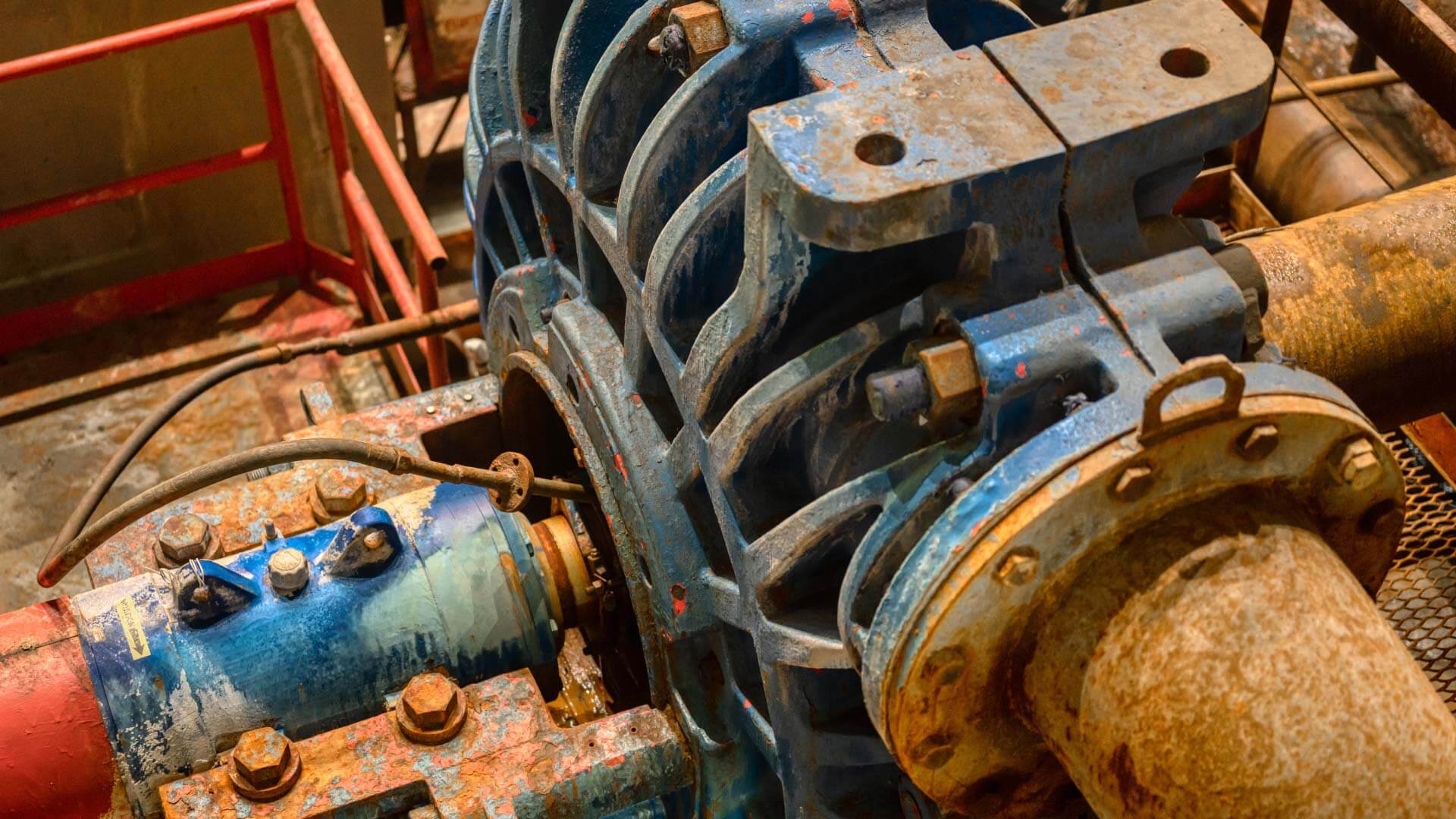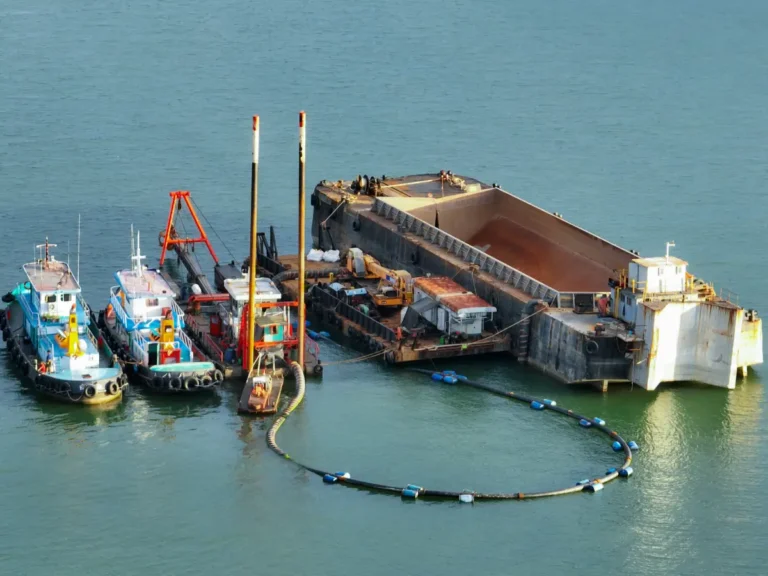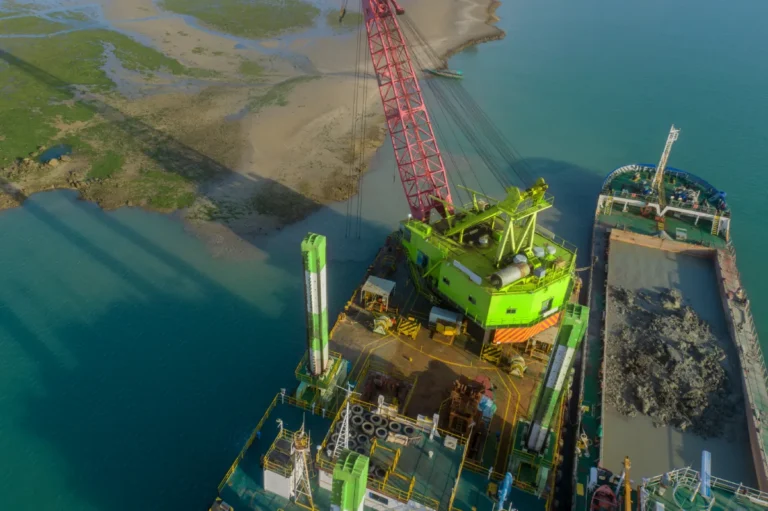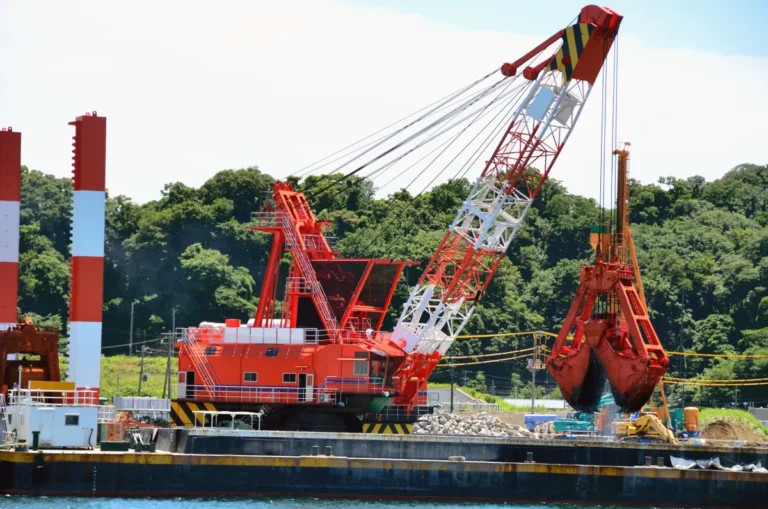Dredge pumps play a vital role in industries like mining, construction, and marine operations, where they are essential for transporting sediment, slurry, and debris from underwater or excavation sites. Whether it’s extracting gold from riverbeds with a gold dredge pump or handling large-scale dewatering with a suction dredge pump, these heavy-duty pumps are critical for maintaining operational efficiency. Their ability to move large volumes of material quickly and reliably directly impacts project timelines and overall productivity.
The performance of a dredge pump significantly affects operational costs and project success. Issues like clogging, wear, and cavitation can reduce efficiency, increase energy consumption, and lead to unexpected downtime. Understanding common problems and implementing effective solutions is essential for maintaining peak performance and avoiding costly repairs. This article will explore the key challenges faced when using gold dredge pumps and suction dredge pumps and provide practical strategies to maximize efficiency and extend equipment lifespan.
Understanding Dredge Pumps
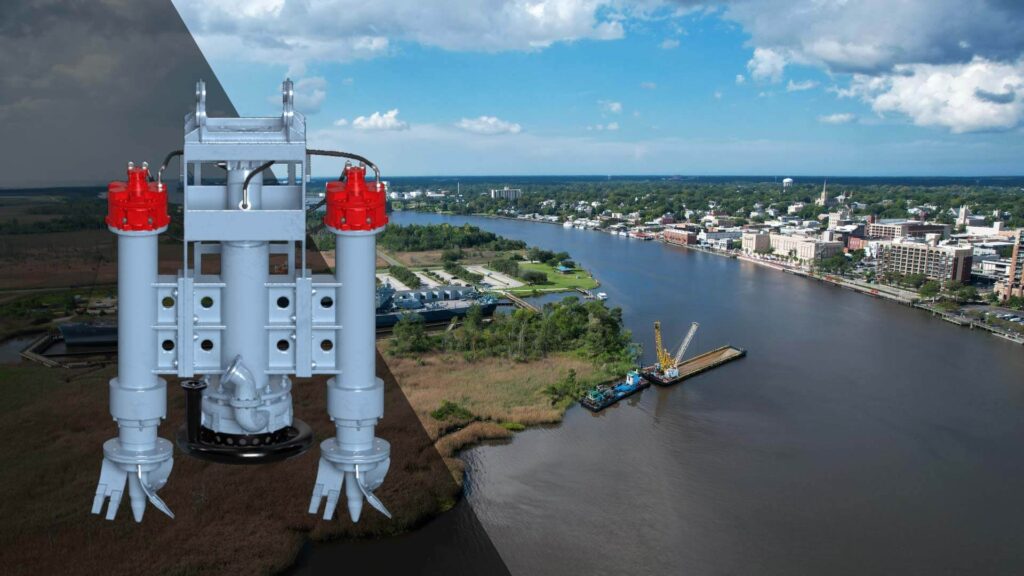
What is a Dredge Pump?
A dredge pump is a heavy-duty pump designed to transport large volumes of sediment, slurry, and debris from underwater or excavation sites. It is commonly used in industries such as mining, construction, environmental remediation, and marine operations. Unlike standard water pumps, dredge pumps are specifically built to handle abrasive materials, including sand, gravel, silt, and other solids, without losing efficiency or experiencing excessive wear.
A dredge pump operates using a combination of suction and discharge mechanisms:
- Suction – The pump creates a vacuum that pulls material from the dredging site through a suction pipe or hose.
- Material Transfer: The material is moved through the pump’s impeller, which increases the pressure and propels it through the discharge line.
- Discharge – The material is expelled through the discharge outlet, which directs the sediment or slurry to the designated location (e.g., a containment area or processing site).
Dredge pumps are highly versatile and essential for a variety of dredging projects, from clearing riverbeds to mining for precious metals. They can handle both liquid and solid materials.
Types of Dredge Pumps
Selecting the right type of dredge pump is critical to maximizing efficiency and minimizing wear and downtime. Different types of dredge pumps are designed for specific applications and material handling requirements:
1. Suction Dredge Pump
A suction dredge pump is the most commonly used type for river dredging, construction site dewatering, and sediment removal. It operates by creating a powerful vacuum that lifts sediment and debris from the dredging site and transfers it through the discharge line.
- Best suited for handling soft materials like silt, sand, and fine gravel.
- Commonly used in shallow water and river maintenance projects.
- Can be equipped with agitators or cutterheads for increased material handling capacity.
2. Gold Dredge Pump
A gold dredge pump is specifically designed for mining operations where fine gold particles are mixed with sand and sediment. These pumps are built to handle highly abrasive materials while maintaining high suction capacity and consistent flow rates.
- Engineered with hardened impellers and wear-resistant liners to withstand abrasive materials.
- High-pressure operation for extracting heavy sediment and gold-bearing material from riverbeds.
- Often combined with sluice boxes or recovery systems to separate gold from other materials.
3. Cutterhead vs. Jet Suction Dredge Pumps
- Cutterhead Dredge Pump – Equipped with rotating blades to cut through compact material (e.g., clay, dense sand, rock). Ideal for deep-sea dredging, land reclamation, and hard material removal.
- Jet Suction Dredger pumps use high-pressure water jets to break up material and improve suction capacity. They are best for handling fine sediments and soft materials in shallow waters.
Importance of Efficient Dredge Pump Operation
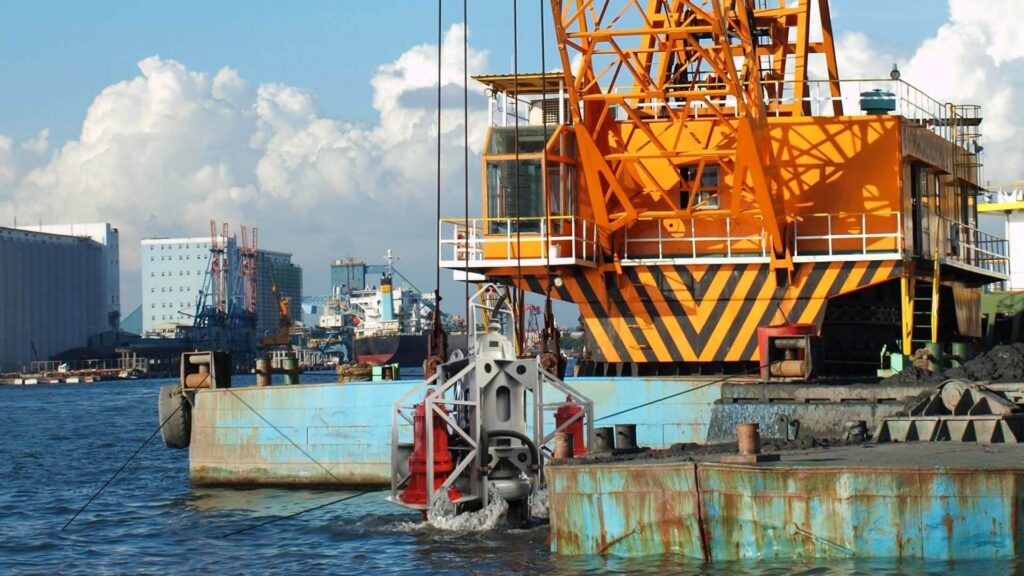
Maintaining high efficiency in a dredge pump is crucial for ensuring smooth project execution and controlling operational costs. An underperforming pump can lead to increased energy consumption, longer project timelines, and higher maintenance expenses.
1. Impact on Project Costs and Timelines
- A dredge pump with reduced efficiency requires more energy to move the same amount of material, increasing fuel and operational costs.
- Inefficient pumping can slow down material removal, extending project completion times and increasing labor costs.
- Consistent flow rates and suction pressure are essential for maintaining productivity and meeting project deadlines.
2. Minimizing Wear, Clogs, and Downtime
- Frequent clogging or pump wear can lead to equipment failure and costly downtime.
- High-abrasion environments (e.g., mining, and dredging) accelerate the wear on impellers and liners, reducing the overall lifespan of pumps.
- Implementing anti-clog designs (e.g., large intake screens and open impellers) can reduce material buildup and improve performance.
3. Proper Pump Selection and Maintenance
- Choosing the right pump for the material type and environmental conditions increases overall efficiency.
- Regular maintenance, including impeller and liner inspections, helps identify early signs of wear and prevents costly repairs.
- Using high-quality materials (e.g., hardened steel or rubber-lined components) increases resistance to abrasion and corrosion, improving long-term reliability.
Common Dredge Pump Problems and Solutions
Dredge pumps are designed to handle tough materials and demanding conditions, but even the most robust equipment can encounter performance issues. From clogging and wear to cavitation and overheating, understanding these common problems and their solutions is key to maintaining optimal dredge pump efficiency. Addressing these issues promptly helps reduce downtime, minimize repair costs, and ensure consistent performance, whether you’re operating a gold dredge pump for mining or a suction dredge pump for sediment removal.
Clogging and Blockages
Cause:
Clogging occurs when large debris, vegetation, or solid materials get trapped in the pump’s intake or impeller. This is especially common in dredging operations involving natural materials such as rocks, sticks, and sediment.
Impact:
- Reduced flow rate and increased pressure.
- Overloading of the motor and impeller.
- Potential damage to the impeller and casing due to strain and pressure buildup.
Solution:
- Use of Non-Clog Impellers and Larger Intake Screens: Installing impellers designed to handle large solids can reduce the likelihood of clogging. Larger intake screens prevent debris from entering the pump chamber.
- Regular Inspection and Removal of Debris: Routine cleaning of the intake and discharge lines prevents material buildup.
- Installing a Cutterhead or Agitator: Cutterheads can break down large debris before it enters the pump, while agitators keep sediment suspended, improving material flow and reducing clogging.
Abrasion and Wear
Cause:
Pumping abrasive materials like sand, gravel, and slurry causes rapid wear of the pump’s internal components. The high velocity of abrasive particles can damage impellers, liners, and casings.
Impact:
- Reduced pump efficiency and flow rate.
- Increased maintenance costs due to premature wear.
- Shortened pump lifespan.
Solution:
- Use Hardened Steel or Rubber-Lined Components: Hardened steel and rubber-lined parts resist abrasion and extend pump life.
- Select a Pump Designed for High-Abrasion Environments: A gold dredge pump or heavy-duty suction dredge pump designed for abrasive materials will have reinforced components and protective liners.
- Implement Regular Maintenance and Part Replacement Schedules: Monitoring wear and replacing parts before failure prevents costly breakdowns and maintains peak efficiency.
Air Leaks and Cavitation
Cause:
Air leaks occur when air enters the suction line or impeller chamber, disrupting the vacuum necessary for proper material flow. Cavitation occurs when vapor bubbles form in the pump due to low pressure, collapsing and damaging the impeller and casing.
Impact:
- Reduced pumping capacity and inconsistent flow.
- Vibrations and noise.
- Damage to the impeller and pump housing.
Solution:
- Inspect and Seal All Suction Line Connections: Ensuring airtight connections prevents air from entering the system.
- Ensure the Pump is Properly Primed Before Operation: Priming removes trapped air and establishes a stable vacuum.
- Adjust Suction Depth to Reduce the Risk of Air Intake: Positioning the pump’s intake at an optimal depth minimizes air infiltration.
Loss of Suction
Cause:
Loss of suction can occur due to worn or damaged impellers, clogged intake lines, or air in the suction chamber. This disrupts the pump’s ability to draw material effectively.
Impact:
- Reduced material flow and pumping capacity.
- Increased operational delays.
- Overloading of the motor due to low pressure.
Solution:
- Replace Damaged Impellers or Suction Liners: Worn components should be replaced to restore proper suction capacity.
- Clear Intake Blockages and Check for Obstructions: Regularly inspecting and clearing the intake line prevents material buildup.
- Ensure Adequate Water Levels to Maintain Suction Pressure: Maintaining consistent water levels ensures stable suction and prevents air intake.
Pump Overheating
Cause:
Overheating is typically caused by insufficient water flow, blocked cooling channels, or excessive operational load. Running a pump beyond its design capacity generates heat and increases wear.
Impact:
- Reduced efficiency and increased energy consumption.
- Damage to internal components, including seals and bearings.
- Shortened pump lifespan.
Solution:
- Increase Water Flow Through the Pump: Maintaining a steady flow of water helps regulate temperature.
- Clean Cooling Channels Regularly: Blocked channels reduce heat dissipation, leading to overheating.
- Reduce Operating Pressure or Workload: Operating the pump within its design capacity prevents excessive heat buildup and improves overall performance.
Seal and Bearing Failures
Cause:
Seals and bearings are vulnerable to damage from heat, misalignment, and abrasive materials. Over time, poor lubrication or misaligned components increase friction and lead to premature failure.
Impact:
- Pump leaks and reduced suction efficiency.
- Increased vibration and noise.
- Operational downtime and higher maintenance costs.
Solution:
- Use Corrosion-Resistant and Heat-Tolerant Seals and Bearings: Materials like stainless steel and high-temperature rubber improve durability.
- Ensure Proper Alignment During Installation: Misaligned components increase friction and wear, so proper alignment improves longevity.
- Lubricate Bearings Regularly to Reduce Friction and Heat: Adequate lubrication minimizes wear and helps maintain smooth operation.
Preventative Maintenance Strategies

Effective preventative maintenance is essential for ensuring the long-term performance and reliability of a dredge pump. Regular maintenance not only extends the pump’s lifespan but also helps maintain consistent efficiency, reducing the risk of unexpected failures and costly downtime. Whether you’re operating a gold dredge pump for mining or a suction dredge pump for sediment removal, implementing a structured maintenance plan can significantly improve overall performance and reduce operational costs.
Regular Inspection and Cleaning
Routine inspection and cleaning are the foundation of any successful dredge pump maintenance program. Over time, sediment, debris, and abrasive materials can build up inside the pump, causing blockages, wear, and performance loss. Establishing a regular maintenance schedule helps identify early signs of wear and damage before they escalate into more serious issues.
- Establishing a Maintenance Schedule – Create a structured maintenance schedule based on the type of material being pumped and the pump’s operating conditions. For high-abrasion environments, more frequent inspections are necessary to prevent excessive wear.
- Cleaning Out Debris and Clogs—To prevent clogging and ensure consistent flow, debris should be regularly removed from the intake and discharge lines. This is particularly important for suction dredge pumps, which are more prone to blockages when handling large or fibrous materials.
- Monitoring Pump Performance Data—Installing flow rate and pressure gauges allows operators to track performance in real time. A drop in flow rate or increase in operating pressure can indicate a clog, damage to the impeller, or wear that needs immediate attention.
- Impeller and Liner Inspection—Worn impellers and liners reduce a dredge pump’s efficiency. Regularly inspecting these components and replacing them as needed ensures consistent performance and prevents major breakdowns.
Proper Material Selection
Choosing the right materials for a dredge pump significantly impacts its ability to withstand abrasion, corrosion, and material flow challenges. Different types of dredged material—such as sand, gravel, slurry, and chemicals—require different pump materials to minimize wear and maximize longevity.
- Hardened Steel for Sand and Gravel – Hardened steel components are ideal for pumps handling coarse and abrasive materials like sand and gravel. Their resistance to abrasion makes them suitable for high-wear environments, such as mining and dredging in rocky riverbeds.
- Rubber-Lined Pumps for Finer Sediment and Slurry – Rubber-lined pumps are better suited for handling finer particles and abrasive slurry. The rubber lining protects internal components from excessive wear while maintaining flexibility and impact resistance. This makes them ideal for gold dredge pumps used in gold mining operations where fine sediments are present.
- Stainless Steel for Corrosive Materials—Stainless steel components resist rust and chemical degradation in applications involving corrosive chemicals or saltwater. They also prevent scaling and pitting, which can affect pump performance over time.
Monitoring and Automation
Technology advances have made it easier to monitor and control dredge pumps in real time. Installing sensors and automated controls allows operators to track performance, detect issues early, and adjust pump settings to maximize efficiency.
- Installing Sensors for Flow Rate, Pressure, and Temperature – Modern dredge pumps can be equipped with sensors that monitor critical performance indicators such as flow rate, discharge pressure, suction pressure, and motor temperature. Any deviation from normal operating parameters can signal potential blockages, impeller wear, or overheating.
- Using Automated Controls to Adjust Pump Speed and Pressure – Automated control systems allow the pump to adjust its speed and pressure based on real-time feedback. For example, if the flow rate decreases due to a partial clog, the system can increase pump speed to compensate. This helps maintain consistent output and reduces operator intervention.
- Real-Time Alerts for Early Detection of Issues – Automated systems can generate real-time alerts via phone, email, or on-site alarms when performance drops below acceptable levels. This enables operators to address issues before they lead to significant downtime or pump failure.
- Remote Monitoring and Diagnostics—Some modern dredge pump systems include remote monitoring capabilities, allowing operators to track performance and troubleshoot issues from off-site. This is particularly valuable for mining and marine dredging operations where pumps are located in remote or hard-to-access areas.
Optimizing Dredge Pump Performance

Maximizing a dredge pump’s performance improves project efficiency, reduces operational costs, and extends the equipment’s lifespan. Selecting the right pump type, fine-tuning operating conditions, and ensuring operator proficiency are key factors in achieving consistent and reliable performance. Whether you’re working with a gold dredge pump for mining or a suction dredge pump for deepwater dredging, optimizing these variables helps prevent downtime and increases material handling capacity.
Matching Pump Type to Application
Selecting the appropriate type of dredge pump is critical to achieving optimal performance. Different applications require different pump designs and operational capabilities to handle the type of material being dredged and the environmental conditions of the project site.
Gold Dredge Pump
- A gold dredge pump is specifically designed for gold mining and recovery, where fine gold particles are mixed with sediment and debris.
- High suction capability allows the pump to lift heavy sediment from riverbeds and mining sites.
- Reinforced impellers and wear-resistant liners help withstand abrasive material and maintain consistent performance.
- Gold dredge pumps often include integrated sluice systems or gold recovery attachments to improve material separation efficiency.
Suction Dredge Pump
- A suction dredge pump is ideal for deep-water and high-flow dredging projects where large volumes of sediment or slurry need to be moved quickly.
- Designed to handle a wide range of materials, from fine silt to coarse gravel.
- High-capacity impellers increase flow rate and minimize pressure loss over long discharge distances.
- Suitable for river maintenance, harbor dredging, and large-scale land reclamation projects.
Cutterhead Dredge Pump
A cutterhead dredge pump is used for breaking down and moving compacted or dense sediment.
- A rotating cutterhead at the pump’s intake cuts through hard materials such as clay, dense sand, and rock.
- Combined with high suction power, it allows for consistent material flow even in challenging environments.
- Often used in offshore and deep-sea dredging, as well as infrastructure development projects.
Optimizing Pump Speed and Pressure
Adjusting the speed and pressure of a dredge pump is essential for maintaining efficiency and avoiding mechanical strain. Incorrect settings can lead to cavitation, increased wear, and reduced material flow.
Balancing Pump Speed and Pressure for Maximum Efficiency
- Operating at excessive speed can cause cavitation, increase wear on impellers and liners, and reduce the overall lifespan of the pump.
- Lower speeds reduce energy consumption and extend the life of internal components, but may reduce flow rates.
- Finding the optimal balance between speed and pressure ensures consistent material flow without overloading the pump.
Avoiding Excessive Speed to Reduce Cavitation and Wear
- Cavitation occurs when vapor bubbles form due to low pressure at the pump’s intake, causing impeller damage when the bubbles collapse.
- Running the pump at lower speeds and adjusting suction depth reduces the risk of cavitation.
- Installing larger intake screens and non-clog impellers can help maintain steady flow at moderate speeds.
Adjusting Pressure Settings Based on Material Density and Flow Rate
- Heavier materials (e.g., gravel, sand) require higher pressure to maintain flow.
- Finer materials and slurry may require lower pressure to prevent clogging and material buildup.
- Monitoring pressure gauges and adjusting settings in real-time ensures consistent output and reduces wear on internal components.
Training and Operator Awareness
Proper training and operator awareness are essential for maintaining dredge pump performance and preventing costly damage. Even the most advanced equipment can underperform if it’s not used correctly or if early warning signs are ignored.
Providing Proper Training for Operators on Pump Setup and Maintenance
- Operators should receive comprehensive training on pump installation, alignment, and setup.
- Understanding how to adjust pump speed, pressure, and suction depth helps maintain stable performance.
- Training should also cover maintenance procedures, such as impeller replacement and seal lubrication.
Ensuring Operators Understand Warning Signs of Pump Malfunction
- Cavitation noises, pressure drops, and inconsistent flow rates are early indicators of pump issues.
- Operators should know how to identify these warning signs and respond quickly to prevent further damage.
- Monitoring changes in pump performance (e.g., increased vibration, reduced suction) allows for early diagnosis and repair.
Encouraging Operators to Report Issues Early to Prevent Damage
- Establishing a clear process for reporting operational issues ensures that problems are addressed before they escalate.
- Regular feedback from operators helps improve maintenance schedules and pump adjustments.
- Encouraging a proactive approach to maintenance reduces downtime and extends equipment lifespan.
Conclusion
Maximizing the efficiency of a dredge pump requires a strategic approach that addresses common problems, operating challenges, and long-term performance goals by selecting the right pump type—whether a gold dredge pump for mining or a suction dredge pump for deepwater dredging—businesses can ensure consistent material flow and minimize downtime. Implementing preventative maintenance, monitoring real-time performance, and adjusting pump settings based on material composition are key to reducing wear and improving operational efficiency. Overcoming environmental and operational challenges with the right equipment and expertise allows businesses to control costs, meet project deadlines, and extend the lifespan of their dredge pumps.

